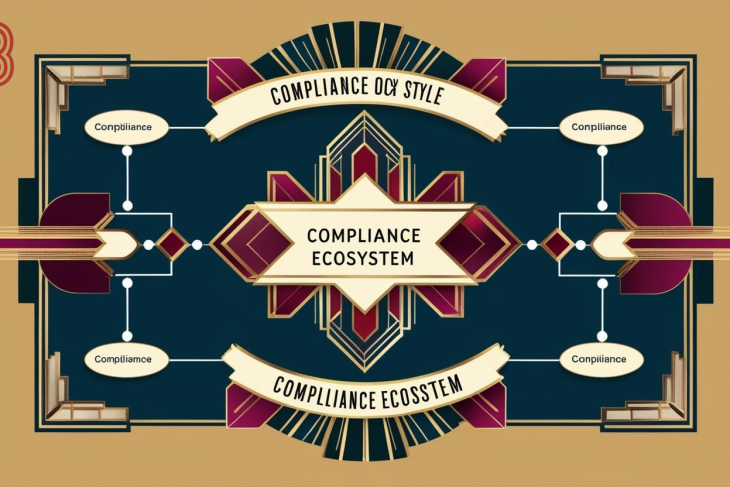
Introduction
The fusion of cyberspace and business operations has unlocked unparalleled opportunities for innovation and growth. However, this integration has also exposed organizations to a complex array of cyber threats and regulatory challenges. In this digital era, cyber compliance and corporate governance are no longer peripheral concerns but central pillars of strategic management. As governments tighten data protection laws and stakeholders demand greater accountability, the alignment between cyber compliance and corporate governance becomes critical for operational integrity, reputational capital, and long-term sustainability.
1. Defining Cyber Compliance and Corporate Governance
Cyber Compliance
Cyber compliance refers to an organization’s adherence to regulatory requirements, internal policies, and industry standards governing the protection, storage, and transmission of digital data. It encompasses a wide spectrum of frameworks such as:
General Data Protection Regulation (GDPR)
Health Insurance Portability and Accountability Act (HIPAA)
Sarbanes-Oxley Act (SOX)
Payment Card Industry Data Security Standard (PCI DSS)
National Institute of Standards and Technology (NIST) frameworks
Each regulation mandates specific protocols concerning data access, encryption, breach notification, and incident response.
Corporate Governance
Corporate governance refers to the system of rules, practices, and processes by which a company is directed and controlled. It encompasses stakeholder relationships, board responsibilities, ethical frameworks, transparency, and strategic oversight. The goal is to foster responsible decision-making, enhance stakeholder trust, and mitigate risks—including those posed by cyber threats.
2. The Convergence of Cyber Compliance and Governance
Cybersecurity is no longer just a technical issue relegated to IT departments. It is a governance issue that intersects with enterprise risk management, legal compliance, operational continuity, and shareholder value. This convergence is driven by:
Increasing cyber threats: From ransomware to supply chain attacks, cyber incidents can cripple operations and erode trust.
Regulatory scrutiny: Non-compliance can result in severe fines, legal actions, and reputational damage.
Stakeholder expectations: Investors, customers, and partners expect robust cyber governance practices.
Board accountability: Directors are being held liable for oversight failures in cyber risk management.
Boards must now ensure that cyber risks are integrated into the organization’s overall governance strategy.
3. Legal and Regulatory Landscape
Global Regulatory Pressures
Governments worldwide are enacting stringent regulations to address data privacy and cybersecurity:
GDPR (EU): Enforces data protection rights and imposes fines up to €20 million or 4% of global turnover.
CCPA and CPRA (California, USA): Grant consumers rights over personal data and require businesses to ensure transparency.
China’s PIPL: Introduces rigorous data localization and cross-border transfer protocols.
India’s Digital Personal Data Protection Act (DPDP): Introduces fiduciary obligations for data handlers.
Industry Standards and Certifications
Beyond legislation, compliance involves adhering to standards like:
ISO/IEC 27001 for information security management
COBIT for IT governance
NIST Cybersecurity Framework for risk-based controls
These frameworks help businesses demonstrate due diligence and align with best practices.
4. The Role of the Board and Executive Leadership
Oversight and Strategy
Effective corporate governance requires the board to take an active role in cyber compliance strategy. Responsibilities include:
Approving a cybersecurity risk management framework
Ensuring periodic cyber risk assessments
Overseeing third-party vendor risk
Mandating incident response protocols
Directors must also verify that management allocates sufficient budget and resources to cybersecurity.
Board Composition and Expertise
Given the technical nature of cyber risk, many boards are integrating cybersecurity expertise through:
Appointing Chief Information Security Officers (CISOs) with board access
Recruiting directors with IT/cyber backgrounds
Establishing dedicated cybersecurity committees
These measures enhance informed decision-making and demonstrate governance maturity.
5. Risk Management and Compliance Frameworks
Enterprise Risk Management (ERM)
Cyber risk is a subset of enterprise risk. Through ERM frameworks, organizations can:
Identify and quantify cyber threats
Integrate cybersecurity into business continuity planning
Prioritize investments based on risk appetite and exposure
Compliance Programs
A robust compliance program includes:
Policies and procedures: Clear documentation on access control, encryption, data classification, etc.
Training and awareness: Educating employees on phishing, social engineering, and secure practices
Audits and assessments: Regular reviews to ensure controls are effective and compliant
Incident management: Protocols for detecting, reporting, and mitigating breaches
6. The Cost of Non-Compliance
Non-compliance can have catastrophic consequences, including:
Financial penalties: GDPR fines have reached hundreds of millions for firms like Amazon and Meta.
Litigation: Data breaches often result in class-action lawsuits.
Reputational damage: Loss of customer trust can result in market share erosion.
Operational disruption: Cyberattacks can paralyze logistics, finance, and production systems.
Case in point: Equifax’s 2017 breach affected over 147 million people and led to over $700 million in settlements.
7. Cyber Resilience as a Governance Imperative
Moving Beyond Compliance
Compliance alone is insufficient. Organizations must aim for cyber resilience—the capacity to anticipate, withstand, recover from, and adapt to cyber incidents. Resilience involves:
Redundancy in critical systems
Regular backups and recovery testing
Continuous threat monitoring
Adaptive security policies
Integrating Cybersecurity into Corporate Strategy
Cyber resilience must be embedded in strategic planning. This includes:
Cybersecurity considerations in mergers and acquisitions (M&A)
Cyber due diligence on third parties
Incorporating cyber risk in digital transformation initiatives
Scenario planning and war-gaming exercises for the board
8. Internal Audit and Compliance Monitoring
Internal audit plays a crucial role in providing independent assurance on the effectiveness of cyber compliance controls. Key activities include:
Evaluating adherence to policies
Identifying gaps and recommending corrective actions
Testing business continuity and disaster recovery plans
Assessing third-party and supply chain cyber risk
Audit findings must be communicated to the board and integrated into governance oversight.
9. The Role of Technology in Governance and Compliance
Automation and AI
Modern compliance programs leverage automation to improve efficiency and accuracy:
AI-driven threat detection: Identifies anomalies and potential breaches
GRC tools: Integrate Governance, Risk, and Compliance data for real-time insights
Automated compliance monitoring: Tracks deviations from policies or regulatory requirements
Blockchain for Auditability
Blockchain can enhance transparency and audit trails in areas like:
Data provenance and integrity
Smart contracts for regulatory reporting
Immutable logs for cybersecurity incidents
10. Third-Party and Supply Chain Risk Management
In today’s interconnected ecosystem, organizations are vulnerable to cyber threats from vendors and partners. High-profile breaches often originate from third-party compromises (e.g., SolarWinds, Target). Governance frameworks must ensure:
Rigorous vetting of vendors
Cybersecurity clauses in contracts
Ongoing monitoring of third-party risk
Supply chain resilience planning
11. ESG and Cyber Governance
Environmental, Social, and Governance (ESG) criteria now include cybersecurity as a governance metric. Investors are increasingly scrutinizing:
Board engagement on cyber risks
Transparency in breach disclosures
Ethical use of data and AI
Cyber governance is becoming a differentiator in ESG ratings and investor decision-making.
12. Future Trends and Challenges
Regulatory Fragmentation
Global organizations face a maze of conflicting regulations, requiring:
Localized compliance strategies
Cross-border data transfer mechanisms
Coordinated incident response across jurisdictions
Evolving Threat Landscape
Cyber threats are becoming more sophisticated with:
AI-generated phishing (deepfakes)
State-sponsored cyber warfare
Attacks targeting IoT and OT systems
Governance frameworks must remain adaptive to evolving risks.
Talent Shortage
The shortage of skilled cybersecurity professionals challenges compliance efforts. Boards must support:
Workforce development initiatives
Partnerships with educational institutions
Upskilling of existing staff
Summary
Cyber compliance and corporate governance are deeply interconnected and mutually reinforcing. In a world where digital risks can compromise shareholder value, regulatory standing, and corporate reputation, organizations must integrate cybersecurity into the highest levels of decision-making. Compliance provides the baseline, but governance ensures resilience, trust, and strategic advantage.
Ultimately, cyber governance is not just about avoiding fines or preventing breaches—it’s about demonstrating ethical stewardship in a digital society. Organizations that embed cyber risk into their governance DNA will not only survive but thrive in the information age.




















